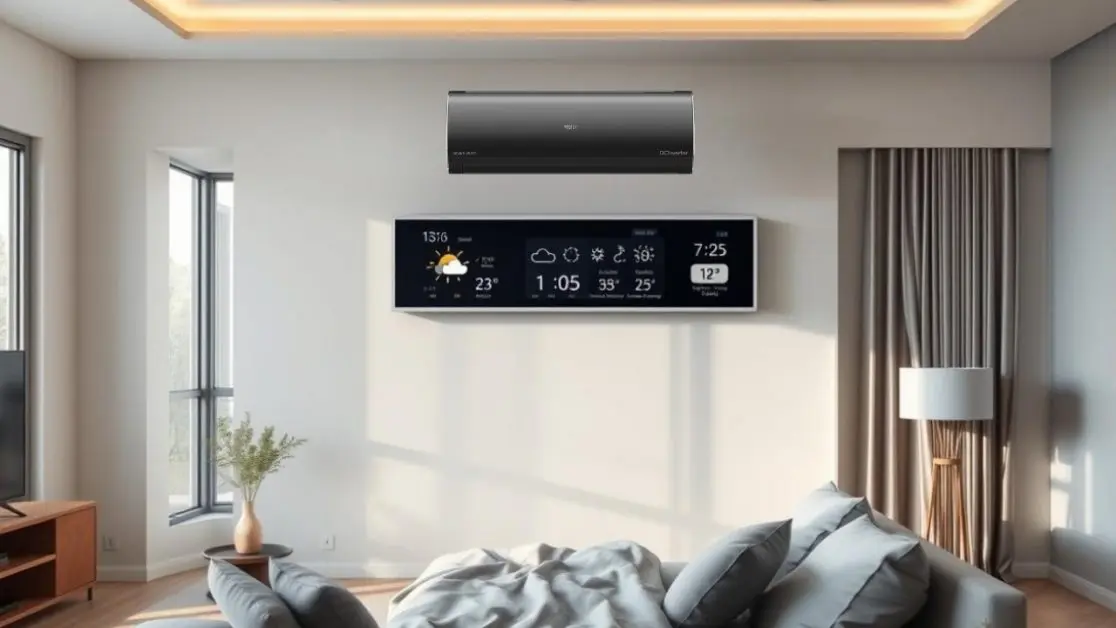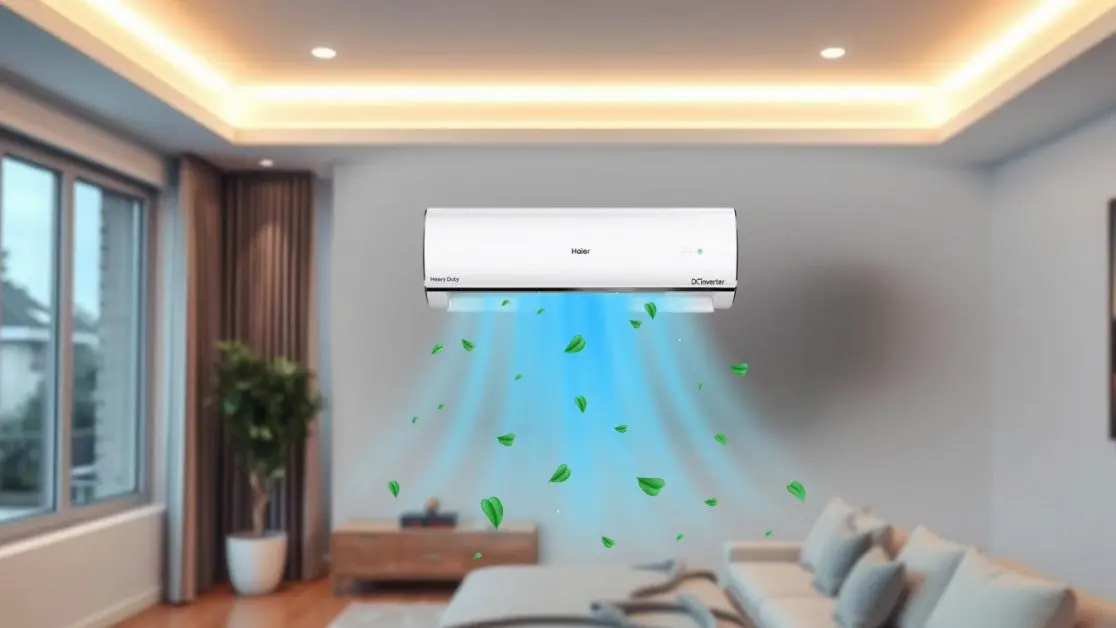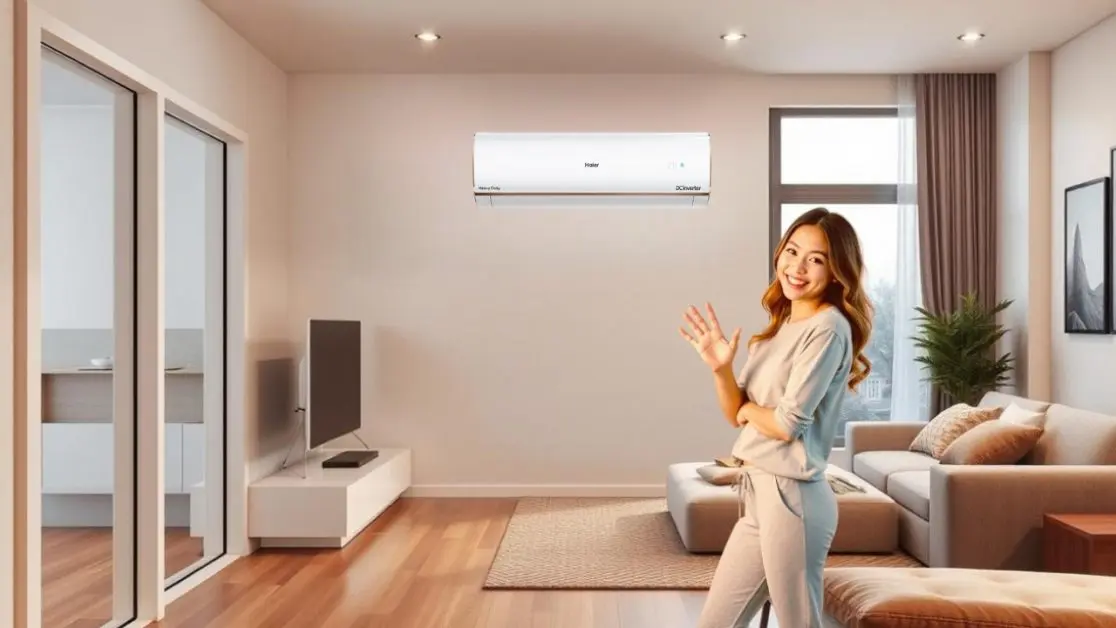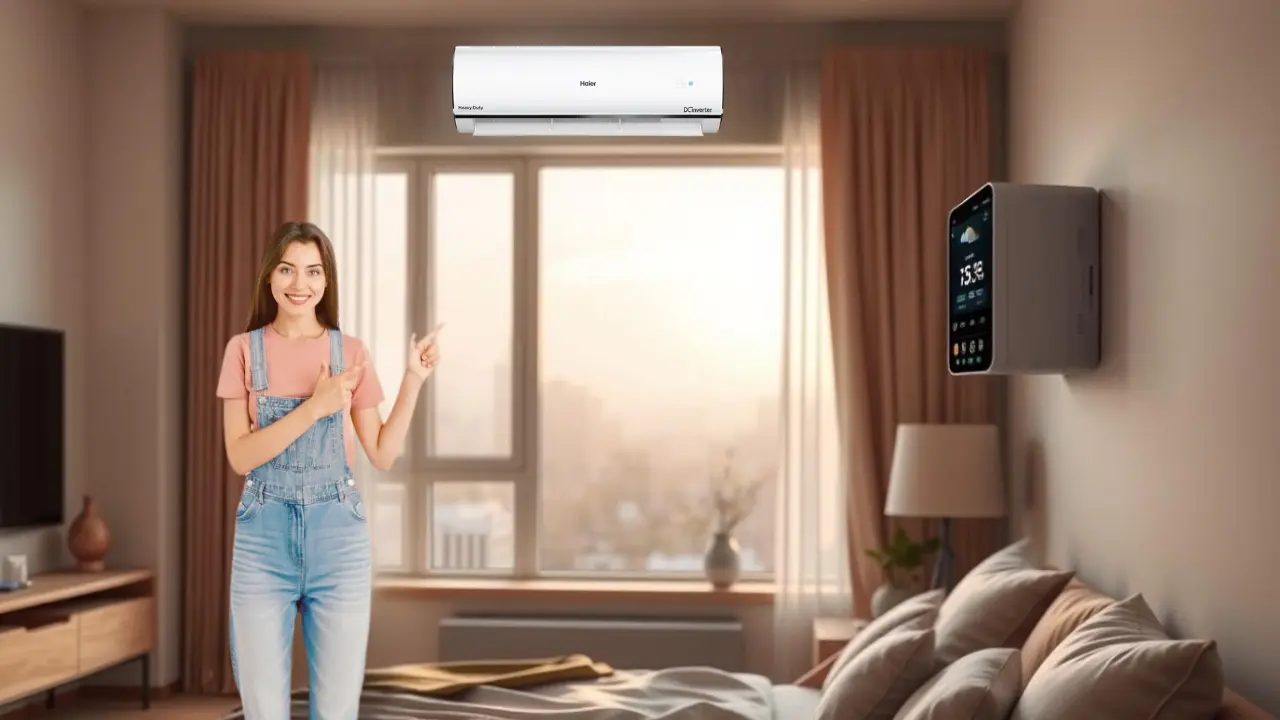AI is revolutionizing how we use air conditioners. Now, these appliances are not only smart but also self-sufficient and extremely energy-efficient.
One of the most awe-inspiring improvements is that an AI-enabled unit can change the air conditioner’s temperature according to the weather outside.
Unlike conventional air conditioners that run on pre-set temperatures, smart air conditioners operate on a completely different level. They utilize live weather updates, analyze a user’s preferences, and ensure that the person stays comfortable while using the least amount of energy possible.
On a hot summer afternoon, returning home to a perfectly cooled room provides a sense of relief and comfort. Without any manual adjustments, the air conditioning system ensures the ideal indoor temperature.
Similarly, on a chilly winter morning, the room is automatically warmed up, offering a cozy and comfortable start to the day. This seamless experience is made possible by AI-powered air conditioning, which intelligently adapts to changing weather conditions.
This article will explain how artificial intelligence (AI) transforms air conditioning systems by incorporating real-time weather data and automation management.
We will cover mechanisms, benefits, implementation, and further developments of AI in temperature control of air conditioning units, including its futurism.
1. How AI-Enabled ACs Process External Weather Conditions

AI-powered air conditioning units make use of diverse datasets to optimally adjust temperatures. Unlike other air conditioners that operate based on manual inputs provided by a user, AI-enabled models adopt a more sophisticated approach by using technologies such as machine learning, real-time weather monitoring, and sensor-based automation integration.
Data Collection & Analysis
AI air conditioning units track and analyze vast amounts of data from different sources constantly to adjust temperature settings strategically. This is achieved through:
- Weather APIs: AI air conditioners can receive live weather updates like temperature, humidity levels, wind speeds, and even pollution through the internet.
- Local Sensors: Some AC units are equipped with outdoor temperature and humidity sensors for hyper-local data collection.
- Historical Climate Trends: Artificial intelligence uses past data to predict current seasonal trends and future temperature shifts.
- User Behavior: The AI learns user cooling preferences, how they change settings during the day, and their tolerable temperature variations.
This predictive capability allows the AC to make smart and preventive adjustments based on AI algorithms.
2. Adjustments of the AC’s Temperature in Different Weather Conditions

Hot and Humid Weather
AI-powered ACs save more energy and lower indoor temperatures efficiently during summer and humid days:
- Pre-cooling the space by lowering the temperature before peak heat hours.
- Adjusting the fan speed and compressor output to maximize cooling efficiency without straining the appliance.
- Activating dehumidification modes when humidity exceeds desirable limits.
- Providing energy-saving suggestions based on anticipated heat waves.
Cold Weather Adaptation
On cooler days, an AI-driven air conditioner doesn’t simply stop cooling; it smartly switches the unit to energy-efficient heating modes (if the unit has a heat pump model). The AI:
- Prevents energy spikes by increasing the internal temperature gradually, ensuring efficient heating.
- Identifies weather changes and reduces unnecessary heating when warm afternoons follow chilly mornings.
- Detects internal-to-external temperature differences and adjusts accordingly to prevent excessive heating.
Rainy and Monsoon Seasons
During the rainy season, humidity levels fluctuate, making indoor environments feel stale. AI-powered ACs assist by:
- Preventing unwanted cooling through humidity control modes.
- Managing mold and mildew risks by controlling moisture levels.
- Preserving indoor freshness while reducing cooling needs via smart airflow control.
Spring and Mild Weather
In moderate weather, AI-enabled ACs use eco-friendly fan modes or natural ventilation settings to reduce cooling power. This aids in:
- Saving energy.
- Reducing reliance on the compressor for indoor climate control.
- Enhancing air quality through temperature-controlled ventilation.
3. Savings and Energy Efficiency with AI ACs
One of the biggest advantages of AI-based ACs is their ability to manage energy consumption. Conventional ACs run on fixed temperature settings, often leading to energy wastage. Unlike traditional methods, AI learns and adjusts in real time.
Intelligent Power Consumption Control
- AI prevents temperature settings that lead to overcooling or overheating, saving 30-50% in energy costs.
- The system automatically controls power levels when no one is home.
- AI conforms to electric tariff rates for cyclical cooling, optimizing energy use during non-peak hours.
Self-Learning Algorithms
- AI improves over time by learning user habits. For example, if an AC recognizes that a user lowers cooling at night, it will schedule temperature reductions automatically.
- The system optimizes temperature control, suggesting the best settings to maintain comfort effortlessly.
Carbon Footprint Reduction
AI-driven air conditioners lower power consumption, contributing to environmental sustainability by reducing electricity use, carbon pollution, and reliance on fossil fuels.
4. AI Integration in Smart Homes and IoT
The future of AI-driven air conditioning lies at the intersection of smart home technologies. AI-powered ACs aggregate data from other IoT devices to provide a truly smart and personalized experience.
Voice Control and Application Support
- AI-powered ACs integrate with Google Assistant, Alexa, or Siri for hands-free operation.
- Users can control settings remotely through smartphone apps, ensuring a comfortable home environment before arrival.
Geofencing Technology
- AI-powered ACs detect user locations using geofencing and adjust temperatures before they arrive home.
- The system automatically activates energy-saving mode when detecting an empty home.
Integration with Other Smart Devices
- AI-powered ACs connect with smart thermostats, weather stations, and window sensors to enhance cooling efficiency.
- If the AI detects open windows, it stops cooling to conserve energy.
5. The Future of AI-Powered Air Conditioning

AI-Powered Climate Forecasting
The next evolution of AI ACs includes predictive climate forecasting. Beyond real-time adjustments, future AI ACs will proactively control temperatures days in advance based on weather predictions.
Enhanced AI Learning for Ultra-Personalization
Future AI capabilities will include:
- Biological triggers (adjusting temperatures based on sleep patterns and body heat changes).
- Seasonal preference adaptation (customizing cooling patterns across different seasons).
- Health and well-being considerations (optimizing temperature settings to enhance sleep and reduce stress).
Sustainable Cooling with Renewable Energy
Future AI ACs will integrate with solar energy grids, optimizing cooling efficiency while minimizing reliance on non-renewable resources.
Ending Thoughts!
Artificial Intelligence is transforming air conditioning into an energy-efficient, automated, and comfortable experience. What was once a feature reserved for high-end buildings is now a fundamental requirement for smart homes.
By incorporating real-time weather adjustments, energy-saving features, and IoT connectivity, AI-powered ACs make climate control effortless. The continued evolution of AI and sustainable technology will ensure that indoor climates are not only comfortable but also tailored to individual needs.
With automation and energy efficiency leading the way, AI-driven climate control is set to revolutionize how we experience air conditioning, paving the way for a greener and smarter future.

